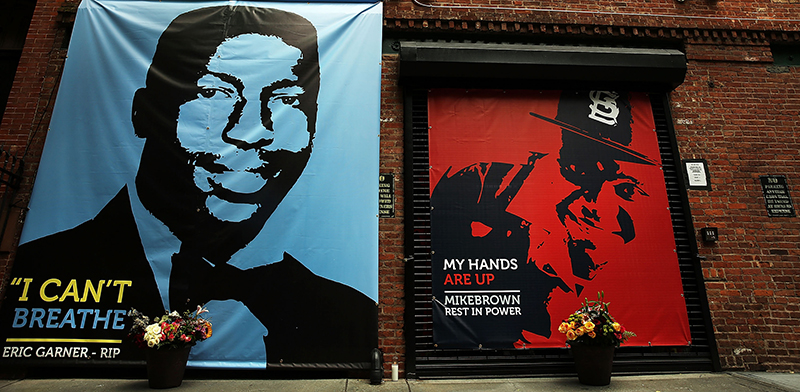
Just over a week after a grand jury’s decision not to indict police officer Darren Wilson for the fatal shooting of Michael Brown in Ferguson, Missouri, a grand jury in Staten Island, New York has decided not to indict the officer responsible for the choking death of Eric Garner, despite the existence of a video capturing the incident that took place on July 17, 2014. In the process of apprehending Garner, the officer placed Garner in a chokehold which an autopsy determined compressed his neck and restricted his chest to the point of asphyxiation. These are just two of many cases we have seen this year where black men are dying at the hands of police officers around the country.
Days after Michael Brown was fatally shot in Ferguson, MO, St. Louis police officers shot and killed a young African American man, Kajieme Powell, 25, who was reportedly holding a knife. Police claims that he was brandishing a knife were not borne out by the available video footage of the shooting. On August 11, Ezell Ford, 25, an unarmed black man with a history of mental illness, was shot and killed by Los Angeles police officers; Akai Gurley, 28, was killed on November 20 when he was shot by an NYPD officer patrolling a stairwell in a public housing development; and two days later, Tamir Rice, 12, was playing with a toy gun in a Cleveland park when he was shot and killed by a Cleveland Police officer.
The recent spate of incidents of lethal force used against men of color by law enforcement from New York to Los Angeles has once again demonstrated the need to take a deeper look at policing tactics on a national level.
Law enforcement policies on the use of force vary widely from agency to agency and state to state and may not meet international standards. International standards provide that law enforcement officers should only use force as a last resort and that the amount of force must be proportionate to the threat encountered and designed to minimize damage and injury. Officers may use firearms as a last resort – when strictly necessary to protect themselves or others against the imminent threat of death or serious injury. The intentional lethal use of firearms is justified only when “strictly unavoidable in order to protect life.”
However, as much attention that these cases have received, we truly do not know how many cases happen each and every year. Hundreds of individuals may be shot and killed by law enforcement annually. However, due to the failure of the Department of Justice to collect accurate, comprehensive national data on police use of force, including the numbers of people killed or injured through police shootings or other types of force, it is impossible to truly understand the enormity of the issue across the country.
Deaths of #EricGarner #MichaelBrown #AkaiGurley & #TamirRice demonstrate need for US to review use of force by police http://t.co/6Sx0yTQAL1
— AmnestyInternational (@amnesty) December 4, 2014
It is imperative that the Justice Department begin collecting and publishing this data (disaggregated on the basis of race, ethnicity and gender) annually, in accordance with the Violent Crime Control and Enforcement Act (1994). The Department of Justice should play a key role in collecting and publishing data on police shootings in order to determine whether shootings are indicative of trends for individual officers or law enforcement agencies.
Furthermore, the Department of Justice should champion the need for a special law enforcement commission, to comprehensively examine and produce recommendations on policing tactics, including use of force and lethal force, discriminatory policing, the militarization of police and the policing of protests to produce recommendations and ensure adherence of all law enforcement agencies to human rights standards for law enforcement.
Amnesty International is urging the Department of Justice to take these crucial steps to ensure that all Michael Browns, Eric Garners, Akai Gurleys, Kajieme Powells, Ezell Fords, Tamir Rices — that all people, especially men of color in the U.S., do not continue to die at the hands of law enforcement in the future. Join us in taking action today!
